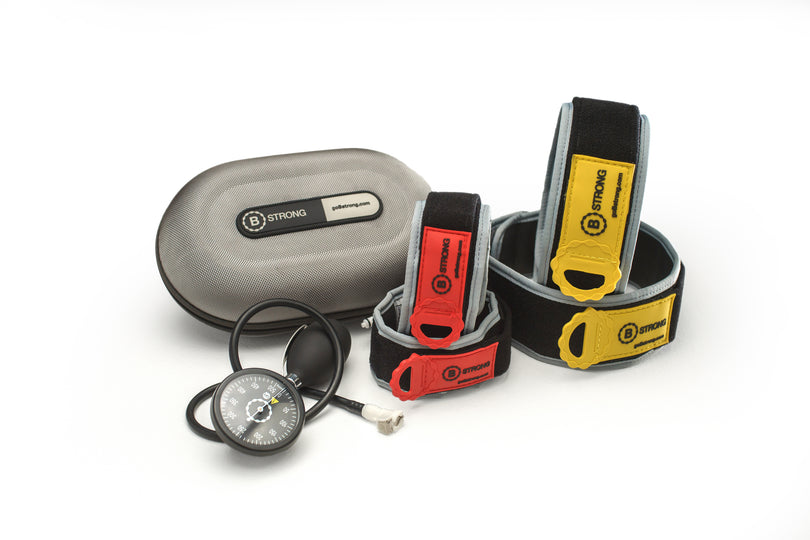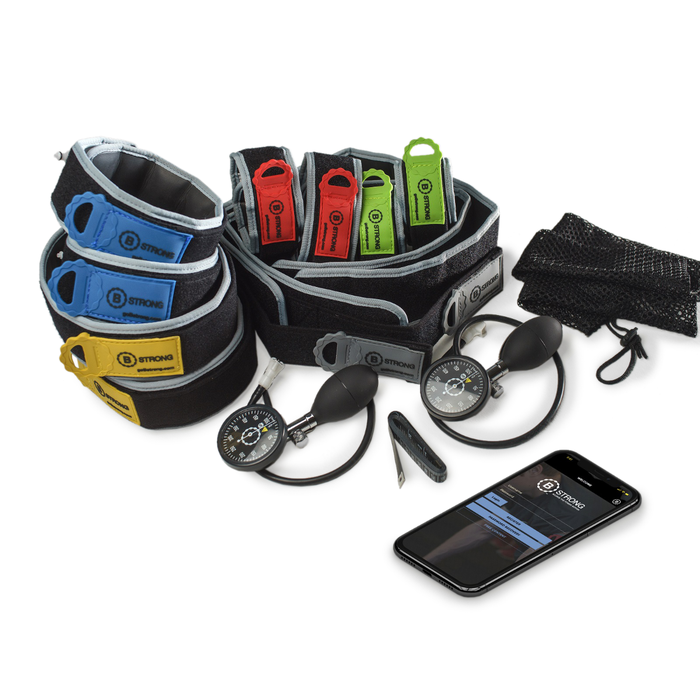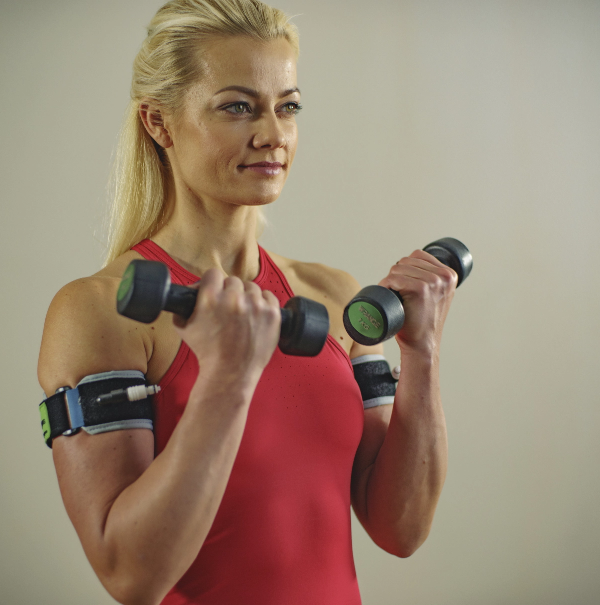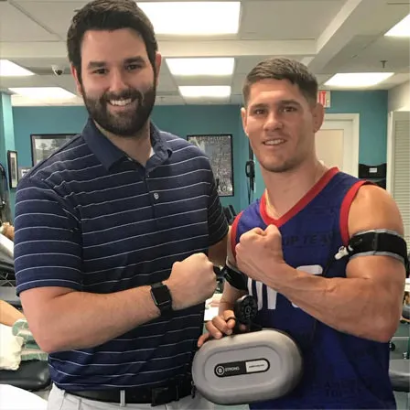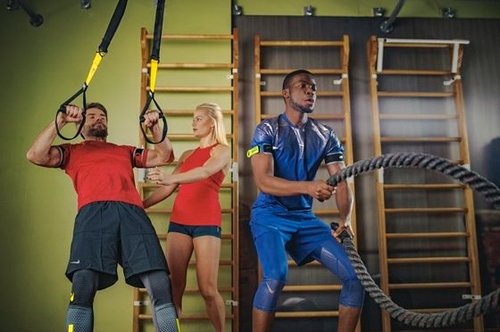BLOOD PRESSURE RESPONSE TO B STRONG BFR vs. WIDE RIGID CUFFS
B Strong did not significantly impact BP response during exercise.
Walking with Leg Blood Flow
Restriction: Wide-Rigid Cuffs vs. Narrow-
Elastic Bands
Sten Stray-Gundersen1, Savannah Wooten1, Hirofumi Tanaka1*
Background: Blood flow restriction (BFR) training is becoming a popular form of exercise. Walking exercise in combination with
pressurized wide-rigid (WR) cuffs elicits higher cardiac workload and a vascular dysfunction due presumably to reperfusion injury
to the endothelium. In contrast, narrow-elastic (NE) BFR bands may elicit different hemodynamic effects. Therefore, we compared
the acute cardiovascular responses to two distinct forms of BFR training during light-intensity exercise. Methods and Results: 15
young healthy participants (M=9, F=6) performed 5 bouts of 2-minute walking intervals at 0.9 m/s with a 1-minute rest and
deflation period with either WR, NE, or no bands placed on upper thighs. Cuff pressure was inflated to 160 mmHg in WR cuffs and
300 mmHg in NE bands while no cuffs were used for the control. Increases in heart rate and arterial blood pressure were greater
(p<0.05) in the WR than the NE and control conditions. Double product increased to a greater extent in the WR than in the NE and
control conditions. Increases in perceived exertion and blood lactate concentration were greater (p<0.05) in the WR compared
with the NE and control conditions (p<0.05), while no differences emerged between the NE and control conditions. There were no
changes in arterial stiffness or brachial artery flow-mediated dilation after all three trials. Conclusion: Use of wide-rigid BFR cuffs
resulted in a marked increase in blood pressure and myocardial oxygen demand compared with narrow-elastic BFR bands,
suggesting that narrow-elastic bands present a safer alternative for at-risk populations to perform BFR exercise. Clinical Trial
Registration: This study was registered in the Clinicaltrials.gov (NCT03540147).
Sten Stray-Gundersen, Savannah Wooten and Hirofumi Tanaka*
Front. Physiol., 29 May 2020 | https://doi.org/10.3389/fphys.2020.00568

